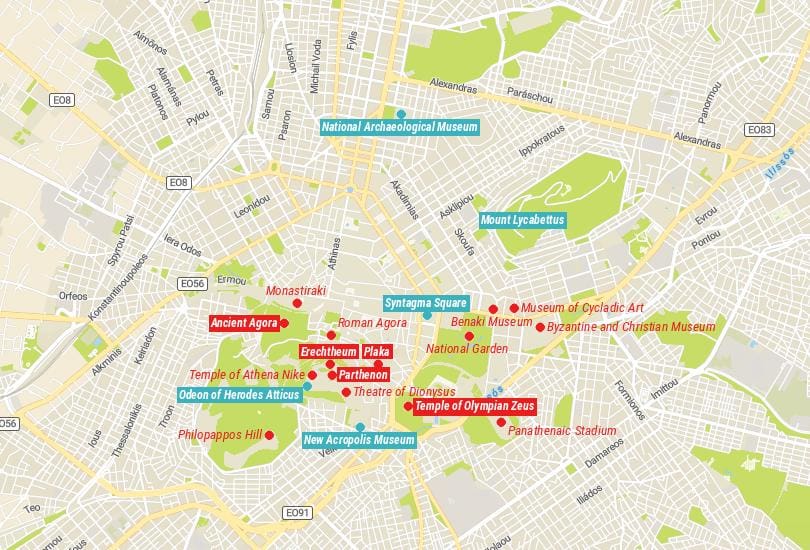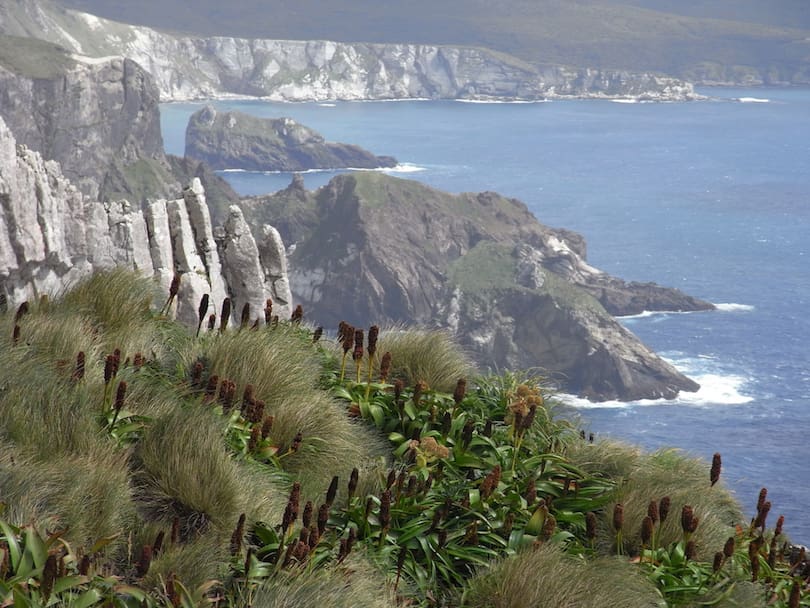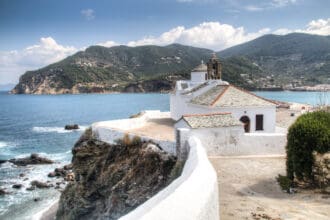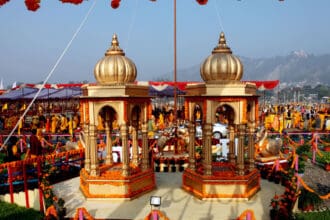Are you planning a trip to Athens? Athens is a city with a rich history and culture, and it is also a great destination for tourists. In this article, we will take a look at the 22 top tourist attractions in Athens that you should not miss on your visit.
The Acropolis
The Acropolis is the most famous landmark in Athens and a must-visit destination for all tourists. It is a citadel located on a hill that offers stunning views of the city. The Acropolis was built in the 5th century BCE and is home to several iconic buildings, including the Parthenon, the Propylaea, the Erechtheion, and the Temple of Athena Nike.
The Parthenon
The Parthenon is one of the most recognizable structures in the world and is located on the Acropolis hill. It was built in the 5th century BCE and is a temple dedicated to the goddess Athena. The Parthenon is an excellent example of ancient Greek architecture, and its design has influenced architecture for centuries.
The Acropolis Museum
The Acropolis Museum is located at the foot of the Acropolis hill and is one of the most important museums in Athens. It houses numerous artifacts from the Acropolis, including statues, pottery, and other objects of historical significance. The museum’s design is also noteworthy, with glass floors that allow visitors to see the ancient ruins beneath the building.
The Ancient Agora
The Ancient Agora was the center of political and social activity in ancient Athens. It was a marketplace and a meeting place for the citizens of Athens. Today, the site is home to several important ancient structures, including the Temple of Hephaestus and the Stoa of Attalos.
The Temple of Olympian Zeus
The Temple of Olympian Zeus is one of the largest temples in ancient Greece and was built in the 6th century BCE. The temple’s construction took almost 700 years to complete, and it was finally finished in the 2nd century CE. Today, only a few columns of the temple remain, but they are still an impressive sight.
The National Archaeological Museum
The National Archaeological Museum is the largest archaeological museum in Greece and one of the most important in the world. It houses an extensive collection of artifacts from ancient Greece, including statues, pottery, jewelry, and other objects of historical significance.
The Benaki Museum
The Benaki Museum is a museum of Greek art and culture located in Athens. It houses a vast collection of artifacts, including paintings, sculptures, and other objects of historical significance. The museum’s collection covers the entire span of Greek history, from ancient times to the present day.
The Byzantine and Christian Museum
The Byzantine and Christian Museum is another significant museum in Athens. It is home to a vast collection of artifacts and exhibits that date back to the Byzantine and post-Byzantine periods in Greece. The museum showcases an impressive collection of religious artifacts, including icons, mosaics, frescoes, and other objects of religious significance.
The Museum of Cycladic Art
The Museum of Cycladic Art is a unique museum that houses an extensive collection of artifacts from the Cycladic civilization, which existed in the Aegean islands during the 3rd millennium BCE. The museum’s collection includes pottery, marble figurines, and other objects that provide insights into the ancient Cycladic culture.
The Panathenaic Stadium
The Panathenaic Stadium is a historic stadium located in the heart of Athens. It was built in the 4th century BCE and was the site of the first modern Olympic Games in 1896. The stadium is made entirely of marble and can seat up to 50,000 spectators.
The Temple of Hephaestus
The Temple of Hephaestus is one of the best-preserved ancient temples in Greece. It was built in the 5th century BCE and is dedicated to the god of fire and metalworking. The temple’s design is impressive, with intricate carvings and columns that showcase the skill of ancient Greek architects and craftsmen.
The Odeon of Herodes Atticus
The Odeon of Herodes Atticus is a stunning ancient amphitheater located on the slopes of the Acropolis. It was built in the 2nd century CE and could seat up to 5,000 spectators. Today, the amphitheater is still used for concerts and other cultural events.
The Theatre of Dionysus
The Theatre of Dionysus is another ancient theater located on the slopes of the Acropolis. It was built in the 6th century BCE and was the site of many ancient Greek plays and performances. Today, the theater is still used for performances during the Athens and Epidaurus Festival.
The Plaka Neighborhood
The Plaka neighborhood is a historic neighborhood in Athens that dates back to ancient times. It is known for its narrow streets, neoclassical buildings, and traditional tavernas. The neighborhood is a popular destination for tourists, and it offers a glimpse into the daily life of Athenians.
The Monastiraki Flea Market
The Monastiraki Flea Market is a vibrant market in the heart of Athens that sells everything from antiques to clothing and souvenirs. It is a great place to experience the local culture and to find unique souvenirs to take home.
The National Garden
The National Garden is a beautiful park located in the heart of Athens. It was created in the 19th century and covers an area of 15.5 hectares. The park is home to several important buildings and monuments, including the Zappeion Hall and the Tomb of the Unknown Soldier.
The Mount Lycabettus
The Mount Lycabettus is the highest point in Athens and offers stunning views of the city. Visitors can hike up the mountain or take a cable car to the top. At the summit, there is a small chapel, a restaurant, and a theater that hosts concerts and other cultural events.
The Athens Central Market
The Athens Central Market is a bustling market in the heart of Athens that sells fresh produce, fish, and meat. It is a great place to experience the local culture and to try some of the city’s famous street food.
The Stavros Niarchos Foundation Cultural Center
The Stavros Niarchos Foundation Cultural Center is a modern cultural complex located in Athens. It was built in 2016 and is one of the largest cultural centers in the world. The center includes the National Library of Greece, the Greek National Opera, and a park that covers an area of 210,000 square meters. Visitors can enjoy a variety of cultural events, including concerts, exhibitions, and performances, in this state-of-the-art facility.
The Athens Riviera
The Athens Riviera is a stunning coastline that stretches along the southern coast of Athens. It includes several beautiful beaches, including the popular Glyfada Beach and Vouliagmeni Beach. Visitors can enjoy swimming, sunbathing, and water sports, as well as restaurants and cafes that offer delicious Greek cuisine.
The Ancient Agora of Athens
The Ancient Agora of Athens was the central marketplace in ancient Athens. It was the hub of commercial, political, and social activity in the city and was the site of many important events in ancient Greek history. Today, visitors can explore the ruins of the Agora, including the Temple of Hephaestus, the Stoa of Attalos, and the ancient Agora Museum.
The Benaki Museum
The Benaki Museum is one of the oldest and most prestigious museums in Greece. It was founded in 1930 and is home to an impressive collection of artifacts and exhibits that showcase the rich history and culture of Greece. The museum’s collection includes ancient artifacts, Byzantine art, and contemporary art from Greece and around the world.
The Museum of Islamic Art
The Museum of Islamic Art is a unique museum that houses a collection of Islamic art and artifacts from around the world. The museum’s collection includes ceramics, textiles, metalwork, and other objects that provide insights into the history and culture of the Islamic world.
The Museum of the History of Athens University
The Museum of the History of Athens University is a fascinating museum that showcases the history of one of the oldest universities in Europe. The museum’s collection includes manuscripts, rare books, scientific instruments, and other objects that provide insights into the history of education and academia in Greece.
The Athens War Museum
The Athens War Museum is a museum that is dedicated to the history of war and military conflicts in Greece. The museum’s collection includes weapons, uniforms, and other artifacts from ancient times to the present day. The museum also hosts special exhibitions and events throughout the year.
The Numismatic Museum
The Numismatic Museum is a museum that is dedicated to the history of coins and currency in Greece and around the world. The museum’s collection includes ancient coins, Byzantine coins, and coins from other countries and civilizations. The museum also hosts exhibitions and educational programs for visitors of all ages.
The Gazi Technopolis
The Gazi Technopolis is a cultural center located in the Gazi neighborhood of Athens. It is housed in an old gasworks factory and is now a center for art, culture, and entertainment. Visitors can enjoy exhibitions, concerts, and other events, as well as restaurants and cafes that offer delicious Greek cuisine.
The Allou! Fun Park
The Allou! Fun Park is an amusement park located in the southern suburbs of Athens. It includes a variety of rides and attractions, including roller coasters, water rides, and carnival games. The park is a popular destination for families and thrill-seekers alike.
Conclusion
Athens is a city that is steeped in history and culture, and there is no shortage of tourist attractions for visitors to explore. From ancient ruins to modern cultural centers, Athens offers something for everyone. Whether you’re interested in history, art, or entertainment, you’re sure to find something that will capture your imagination and make your trip to Athens unforgettable. Make sure to plan your itinerary well in advance, as there are so many wonderful places to visit that it can be difficult to fit everything in. Don’t forget to also take some time to explore the city’s neighborhoods and sample some of its delicious cuisine.
In conclusion, Athens is a must-visit destination for anyone who loves history, culture, and art. With so many top tourist attractions to choose from, it’s no wonder that Athens remains one of the most popular destinations in the world. So, pack your bags and get ready to embark on an adventure of a lifetime in Athens!
FAQs:
Q: What is the best time to visit Athens? A: The best time to visit Athens is during the spring (April to June) and fall (September to November) when the weather is mild and the crowds are fewer.
Q: What are some must-try foods in Athens? A: Some of the must-try foods in Athens include moussaka, souvlaki, tzatziki, dolmades, and Greek salad.
Q: What is the currency used in Athens? A: The currency used in Athens is the Euro.
Q: Are the top tourist attractions in Athens wheelchair accessible? A: Yes, most of the top tourist attractions in Athens are wheelchair accessible, although some may have restrictions or limitations.
Q: Is it safe to travel to Athens? A: Yes, Athens is generally a safe city to visit, but as with any destination, it’s important to take precautions and be aware of your surroundings.







